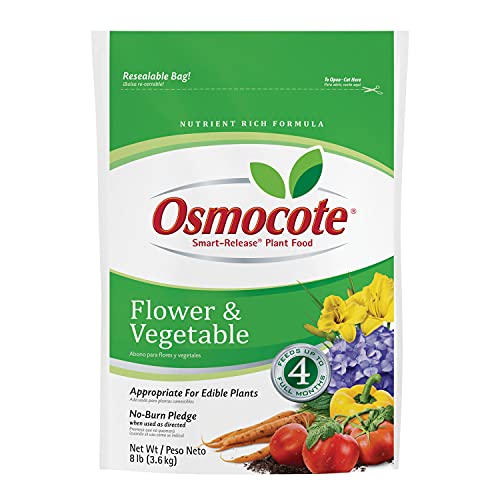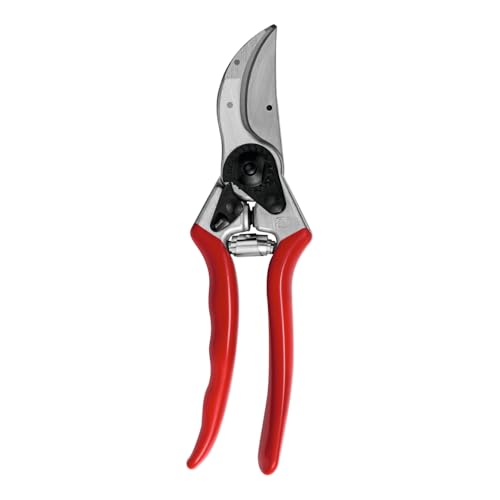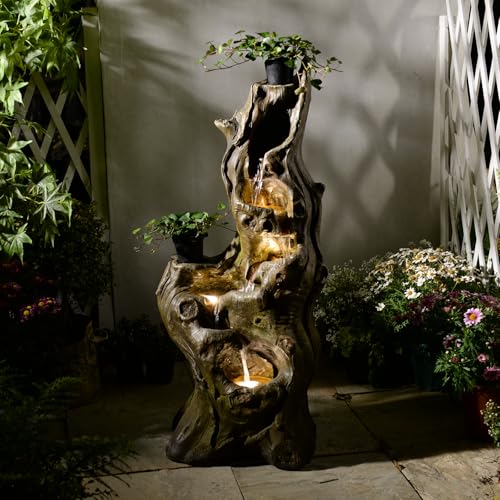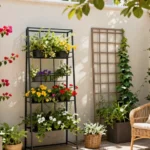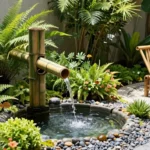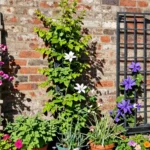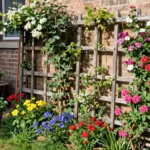We’ve all been there – kneeling on hard ground with dirt under our fingernails while struggling to repot plants or organize gardening supplies. An outdoor potting bench transforms this frustrating experience into an enjoyable and efficient gardening ritual. These versatile workstations aren’t just functional pieces of furniture; they’re the command centers that turn chaotic gardening sessions into organized, productive outdoor activities.
Whether you’re a weekend warrior who loves weekend plant projects or a serious gardener who spends hours tending to your green sanctuary, the right potting bench can revolutionize your outdoor space. From rustic wooden designs that blend seamlessly with natural landscapes to modern metal constructions with innovative storage answers, there’s a perfect potting bench waiting to elevate your gardening game.
We’ll explore creative ideas that’ll help you choose or build the ideal potting station that matches your style, budget, and gardening needs.
Build a Simple Wooden Potting Bench From Scratch
Building your own wooden potting bench gives you complete control over size, features, and design while saving money compared to store-bought options. We’ll walk you through creating a sturdy, functional bench that’ll serve your gardening needs for years to come.
Choose the Right Wood Materials
Cedar remains our top recommendation for outdoor potting bench construction due to its natural weather resistance and insect-repelling properties. This aromatic wood requires minimal maintenance and develops an attractive silver-gray patina over time.
Pressure-treated pine offers excellent value for budget-conscious builders, providing good durability at roughly half the cost of cedar. We recommend selecting boards with minimal knots and checking moisture content before purchase.
Redwood delivers premium performance with superior rot resistance and beautiful grain patterns, though it costs significantly more than other options. This California native wood works exceptionally well in humid climates.
Avoid untreated pine or fir for outdoor applications, as these materials deteriorate quickly when exposed to moisture and temperature fluctuations. We’ve seen benches built from these woods fail within two seasons.
Essential Tools and Hardware Needed
Power drill becomes your most important tool for assembling wooden potting bench components efficiently. We recommend cordless models with adjustable torque settings to prevent overdriving screws.
Circular saw or miter saw ensures clean, accurate cuts throughout the construction process. Hand saws work for smaller projects but require significantly more time and effort.
Hardware requirements include stainless steel screws measuring 2.5 inches for frame assembly and 1.25 inches for attaching slats. We use approximately 40-50 screws for a standard 48-inch bench.
Additional supplies cover wood glue, sandpaper (120 and 220 grit), and exterior wood finish such as polyurethane or teak oil. These materials protect your investment and enhance the final appearance.
Step-by-Step Construction Guide
Frame assembly starts with cutting four legs to your desired height, typically 36 inches for comfortable working position. We recommend adding cross-braces between legs for enhanced stability.
Top surface construction involves arranging slats with small gaps between boards to allow water drainage. Space boards approximately 1/4 inch apart to prevent water accumulation while maintaining structural integrity.
Lower shelf installation provides essential storage space for pots, tools, and soil bags. Position this shelf 12-16 inches from ground level for easy access without bending excessively.
Finishing touches include sanding all surfaces starting with 120-grit paper followed by 220-grit for smoothness. Apply your chosen finish according to manufacturer instructions, ensuring complete coverage of end grain areas.
Final assembly requires checking all connections and tightening any loose screws before placing the bench in its permanent location. We suggest positioning it on level ground or concrete pavers for optimal stability.
Repurpose Old Furniture Into Functional Potting Stations
Before investing in expensive materials for a brand new bench, we can transform forgotten furniture pieces into stunning outdoor potting stations. Old furniture often provides better storage answers and unique character that new builds simply can’t match.
Transform an Old Dresser or Cabinet
Dressers make exceptional potting benches because they offer incredible storage capacity right from the start. We can remove some drawers or modify their depth to create versatile compartments for organizing gardening tools, pots, and soil bags. Adding a durable work surface like a wooden or metal top transforms the dresser into a practical outdoor workstation.
Weather protection becomes essential when converting indoor furniture for garden use. We should paint or seal the entire piece to prevent moisture damage and extend its lifespan significantly. Attaching hooks or small shelves on the sides provides extra storage for frequently used tools and supplies.
Cabinet conversions work similarly to dressers but often provide more enclosed storage space. The existing doors help protect stored items from rain and dust while maintaining easy access during gardening sessions.
Convert a Vintage Table or Desk
Vintage tables and desks provide sturdy work surfaces that often surpass modern alternatives in durability and craftsmanship. These pieces frequently include drawers or compartments that prove ideal for storing small gardening supplies like seed packets, plant markers, and hand tools.
Enhancement options include adding waterproof tops to protect the original surface from soil and water damage. We might need to reinforce legs if they show signs of weakness or instability. Their inherent aesthetic adds important charm to outdoor gardening spaces while blending function with attractive decoration.
Desks with multiple drawers create organized zones for different gardening activities. We can designate exact drawers for seeds, another for tools, and larger compartments for soil amendments and fertilizers.
Upcycle Pallets Into Rustic Benches
Pallets offer an affordable and eco friendly approach to creating rustic style potting benches with minimal investment. We can transform them by stacking and securing multiple pallets as shelving units or bench tops depending on our space requirements.
Their natural slatted design provides excellent drainage and air circulation, which proves important for soil storage and plant health. Pallets are easy to customize with additional shelves, hooks, and bins for organizing tools and plants according to our exact needs.
Stacking configurations allow us to create multi level storage systems that maximize vertical space. We can add wooden planks across the slats to create solid work surfaces while maintaining the rustic character that makes pallet furniture so appealing.
Create Multi-Level Potting Benches for Maximum Efficiency
Multi-level potting benches transform ordinary gardening tasks into organized workflows by utilizing different heights for various activities. We’ll explore how these strategic designs maximize your workspace while keeping everything within arm’s reach.
Design Tiered Shelving Systems
Tiered shelving systems maximize storage by creating dedicated spaces for pots, plants, and gardening supplies arranged by size or frequency of use. Smart gardeners arrange larger pots on lower shelves while placing frequently used hand tools on upper tiers for easy access. Small spaces like balconies and patios benefit enormously from this vertical approach since it maintains organization without expanding the bench’s footprint.
Custom tiers work best when built at heights that correspond to your most common gardening tasks. We recommend spacing shelves 8-12 inches apart to accommodate standard pot sizes while allowing room for plant growth. Adjustable shelving systems offer even more flexibility as your gardening needs change throughout the seasons.
Incorporate Vertical Storage Answers
Vertical storage answers increase usable space dramatically without requiring additional floor area for your potting station. Built-in racks and pegboards mounted on the back panel create instant organization for tools while keeping the main work surface clear. These vertical elements transform unused wall space into valuable storage that’s both functional and visually appealing.
Integrated plant stands combined with potting benches showcase your growing collection while providing easy access during repotting sessions. Wall-mounted hooks and slots positioned at comfortable heights keep essential tools like trowels and pruning shears within immediate reach. We’ve found that vertical gardens attached to potting bench backs serve dual purposes by displaying plants and maximizing compact gardening areas.
Add Hanging Tool Organization
Hanging tool organization keeps garden essentials visible and prevents cluttered work surfaces that slow down your gardening efficiency. Metal hooks mounted on overhead frames or bench sides provide instant access to frequently used items like gloves, hand pruners, and small watering tools. Suspended baskets offer perfect storage for seed packets, plant labels, and other small accessories that tend to get lost.
Pegboard systems excel at accommodating tools of various sizes while allowing easy rearrangement as your collection grows. We recommend installing hanging storage at shoulder height or slightly below to prevent strain when reaching for tools during extended gardening sessions. Strategic placement of these organizational elements accelerates your workflow and transforms chaotic potting sessions into efficient, enjoyable experiences.
Install Built-In Storage Features for Garden Supplies
Built-in storage transforms an ordinary potting bench into an organized gardening command center. We’ll explore strategic storage answers that keep essential supplies within arm’s reach while protecting them from weather damage.
Add Drawers and Cabinets Underneath
Drawers maximize storage capacity while keeping soil bags, fertilizers, and smaller tools completely hidden from view. We recommend installing deep drawers for bulky items like potting soil and shallow ones for seed packets and plant labels. Cabinet space underneath provides secure storage for expensive tools and chemicals that need protection from moisture.
Installing drawer slides ensures smooth operation even when fully loaded with heavy garden supplies. We suggest using cedar 2x4s for the drawer frames since they naturally resist rot and insects. Cabinet doors with weather-resistant hinges create enclosed compartments perfect for storing spray bottles, gloves, and seasonal decorations.
Combining both drawers and cabinets underneath your bench doubles your storage options. We’ve found that positioning drawers on one side and cabinets on the other provides the best balance of accessibility and protection for different types of garden supplies.
Include Open Shelving for Easy Access
Open shelving offers instant visibility and quick access to frequently used items like pots, seed trays, and watering cans. We design slatted shelves that promote drainage and prevent water buildup around stored items. Adjustable shelf heights accommodate everything from small seedling trays to large ceramic planters.
Installing multiple shelf levels maximizes vertical storage space without blocking access to your work surface. We position the most commonly used supplies on middle shelves for easy reach while keeping seasonal items on higher or lower levels. Fixed shelving provides structural stability while adjustable options allow customization as your gardening needs change.
Combining open shelves with enclosed storage creates the perfect balance of convenience and protection. We recommend placing weather-sensitive items in enclosed areas while keeping everyday tools and containers on open shelves for immediate access.
Create Specialized Compartments for Tools
Custom tool compartments keep hand trowels, pruners, and gloves organized in dedicated spaces designed for each item’s exact shape. We build narrow slots for flat tools like weeding knives and wider sections for bulkier items like hand cultivators. Small bins or dividers prevent tools from shifting around during use.
Installing flip-up leaves or fold-out racks expands your workspace while providing additional tool storage when needed. We incorporate hooks and pegs along the sides for hanging frequently used tools like scissors and measuring spoons. Vertical tool slots keep handles upright and blades protected from damage.
Designing specialized compartments for different tool categories streamlines your gardening workflow significantly. We create separate sections for planting tools, maintenance equipment, and harvesting supplies so you can quickly locate exactly what you need for each gardening task.
Design Weather-Resistant Outdoor Potting Benches
Building an outdoor potting bench that withstands the elements requires careful consideration of materials and construction techniques. We’ll explore the essential components that ensure your potting station remains functional and attractive for years to come.
Select Durable Materials Like Cedar or Teak
Cedar stands out as the top choice for outdoor potting benches due to its exceptional moisture resistance and natural ability to repel insects and decay. We recommend cedar because it’s widely available and easy to work with for DIY garden projects, making it accessible for builders of all skill levels. Teak offers premium durability with its natural oils that protect against weather damage, though it comes at a higher price point.
These naturally weather-resistant woods eliminate the need for frequent maintenance while providing the structural integrity needed for heavy gardening tasks. Cedar’s affordability makes it particularly attractive for budget-conscious gardeners who don’t want to compromise on quality. Both materials develop an attractive weathered patina over time, adding character to your outdoor workspace without requiring constant upkeep.
Apply Proper Weatherproofing Treatments
Outdoor-grade sealants provide an essential protective barrier against sun damage, rain penetration, and temperature fluctuations that can cause wood to crack or warp. We suggest applying marine-grade polyurethane or specialized garden furniture stains designed specifically for outdoor wood projects. These treatments penetrate deep into the wood fibers, creating long-lasting protection that maintains the bench’s appearance and structural integrity.
Regular reapplication every 2-3 years ensures continued protection, especially in harsh climate conditions. UV-resistant formulations prevent fading and maintain the wood’s natural color while blocking moisture that leads to rot and mildew. Professional-grade weatherproofing treatments significantly extend your potting bench’s lifespan, making this investment worthwhile for serious gardeners.
Choose Hardware That Resists Rust and Corrosion
Stainless steel hardware provides superior corrosion resistance and maintains its appearance even after years of exposure to moisture and temperature changes. We recommend using galvanized steel or brass alternatives for hinges, screws, and mounting brackets, as these materials resist rust formation that can stain wood and compromise structural connections.
Quality hardware ensures smooth operation of hinges, latches, and moving parts throughout the bench’s lifetime. Marine-grade fasteners cost more initially but eliminate the need for frequent replacements and prevent unsightly rust stains on your finished project. Proper hardware selection prevents joint failure and maintains the bench’s stability, protecting your investment in quality materials and construction time.
Add Functional Work Surface Enhancements
The work surface serves as the heart of any potting bench, making thoughtful enhancements essential for maximizing both efficiency and enjoyment. Smart additions to this central workspace can transform ordinary gardening tasks into streamlined processes that save time and reduce mess.
Install a Removable Potting Tray
Removable potting trays offer unmatched convenience for containing soil spills and simplifying cleanup after each gardening session. We recommend selecting trays made from metal or waterproof plastic materials that resist moisture and soil acidity while maintaining their shape over time. These portable surfaces slide easily in and out of the bench structure, allowing us to transfer plants, soil, and debris without creating mess on the main work surface.
The tray system facilitates quick disposal of plant material and excess soil once potting tasks are complete. Standard tray dimensions typically measure 24 inches by 18 inches, providing ample workspace for most container gardening projects. Custom sizing options accommodate benches with unique dimensions or exact gardening requirements.
Create a Built-In Soil Bin
Built-in soil bins eliminate frequent trips to the main soil supply while keeping gardening materials organized and accessible. We suggest designing these storage compartments as pull-out drawers positioned beneath the work surface for easy access without bending or reaching. Covered bin designs protect soil from moisture and prevent contamination from outdoor elements.
Compartmentalized bins allow separation of different soil types, compost, and amendments within the same storage area. Standard bin capacity ranges from 30 to 50 gallons, accommodating most residential gardening needs without overwhelming the bench structure. Drainage holes in the bottom prevent water accumulation and maintain soil quality during storage.
Add a Water-resistant Backsplash
Water-resistant backsplashes protect both the bench and surrounding areas from soil splashes, water spray, and fertilizer spills during active gardening sessions. Galvanized metal, ceramic tiles, and treated wood with waterproof sealants provide excellent protection while complementing various design aesthetics. These protective surfaces extend approximately 18 inches above the work surface to capture most splashes effectively.
Backsplashes double as mounting surfaces for hanging garden tools, small storage containers, and decorative elements that personalize the workspace. Easy cleanup becomes possible with smooth, non-porous materials that wipe clean with minimal effort. Installation typically involves securing the backsplash material directly to the bench frame or an existing wall structure behind the potting area.
Incorporate Mobility Features for Flexible Gardening
Mobility transforms your potting bench from a stationary workspace into a versatile gardening companion that adapts to your changing needs. Smart mobility features let you follow the sun throughout the day or quickly move your workspace indoors when weather conditions change.
Add Heavy-Duty Wheels or Casters
Installing sturdy wheels or casters on your potting bench creates the ultimate flexible workspace. The Best Choice mobile potting bench demonstrates this perfectly at just 29 pounds with smooth rolling, lockable wheels that make repositioning effortless. These lockable casters provide stability during use while allowing quick relocation when needed.
Choosing the right wheel type depends on your terrain and usage patterns. Pneumatic wheels work best on uneven surfaces like gravel or grass while solid rubber wheels excel on smooth concrete or paved areas. The LuxenHome mobile wood potting bench features removable wheels that adapt to different surfaces throughout your garden.
Placement of wheels affects both stability and maneuverability. Position casters at the corners for maximum support and ensure they can handle the combined weight of your bench plus supplies. Swivel casters on the front combined with fixed wheels on the back create optimal steering control.
Design Lightweight Portable Options
Creating lightweight designs enhances portability without sacrificing workspace functionality. The Best Choice bench weighs only 29 pounds while still providing ample working surface area and storage capacity. This balance proves that mobility doesn’t require compromising on durability or features.
Material selection plays a crucial role in achieving optimal weight distribution. Lightweight woods like cedar or pine offer excellent strength to weight ratios compared to heavier hardwoods. Metal frames using aluminum instead of steel can reduce weight by up to 40% while maintaining structural integrity.
Ergonomic considerations become even more important with portable designs. Built in handles or cutouts make lifting and carrying easier on your back and hands. Corner guards protect both the bench and your surfaces during transport and storage.
Create Foldable Potting Bench Designs
Foldable mechanisms maximize space efficiency while maintaining full functionality when deployed. A portable, collapsible potting bench inspired by butler tray tables uses a thrifted folding base with raised sides to contain soil and debris. This design stores compactly in garden sheds or garages when not in use.
Hinged work surfaces expand your workspace when needed and fold down for storage. Side panels that flip up create additional prep space while folding legs reduce the overall footprint by 75% when collapsed. These features prove especially valuable for gardeners with limited storage space.
Quick setup and breakdown systems save time and effort during busy gardening sessions. Tool free assembly mechanisms using spring loaded pins or cam levers allow setup in under two minutes. Integrated storage compartments keep hardware organized and prevent loss of essential components.
Customize Your Potting Bench With Personal Touches
Personal touches transform your outdoor potting bench from a basic work surface into a unique gardening sanctuary that reflects your individual style and passion for gardening.
Paint With Weather-Resistant Outdoor Colors
Protecting your potting bench with weather-resistant paint serves dual purposes of preservation and personalization. Weather-resistant outdoor paints shield wood from moisture damage and harmful sun exposure while refreshing the bench’s overall appearance. Earthy tones like greens or muted colors help the bench blend seamlessly with your garden’s natural environment.
Leftover paint provides an eco-friendly approach to bench customization without additional expense. Sherwin Williams ‘7745 Muddled Basil’ creates an appealing vintage aesthetic while offering superior wood preservation for worn benches. Applying multiple thin coats ensures better coverage and longevity than single thick applications.
Add Decorative Hardware and Accents
Vintage-style knobs and handles enhance both functionality and visual appeal of your potting bench workspace. Metal accents like weathered hooks or antique brackets provide practical hanging answers for frequently used tools. Decorative hardware creates organized storage while adding distinctive character to your gardening station.
Antique garden tools mounted as wall art combine nostalgic charm with practical accessibility. Weathered wooden crates offer additional storage compartments while maintaining rustic aesthetic appeal. Vintage signs or handmade plaques personalize the space and create conversation starters for visiting fellow gardeners.
Include Personalized Storage Labels
Labeling storage bins keeps gardening supplies organized and easily accessible during busy planting sessions. Hand-painted labels add artisanal charm while providing clear identification for different seeds, fertilizers, and small tools. Vintage-style tags attached with twine create cohesive design elements that complement rustic bench aesthetics.
Customized labels eliminate time spent searching for exact items during gardening projects. Waterproof markers or outdoor-rated adhesive labels withstand weather exposure while maintaining readability. Clear categorization systems help maintain organization and streamline your gardening workflow throughout different seasons.
Maximize Small Space Potting Solutions
Limited outdoor areas don’t have to limit our gardening ambitions. Smart potting bench answers can transform tiny balconies and small patios into productive gardening spaces.
Build Wall-Mounted Fold-Down Benches
Wall-mounted fold-down potting benches offer the ultimate space-saving solution for cramped outdoor areas. These ingenious designs fold flat against the wall when not in use, freeing up valuable floor space for daily activities. When folded down, they provide a sturdy workspace that rivals traditional benches in functionality.
Installing hooks and shelves on the vertical wall space above these benches maximizes storage potential. Tools hang within easy reach while pots and supplies organize neatly on mounted shelves. The combination creates an efficient workspace that disappears completely when gardening tasks finish.
Mounting brackets must support the weight of both the bench and gardening materials. Heavy-duty hinges ensure smooth operation through countless fold-down cycles. Weather-resistant materials like marine-grade plywood or cedar withstand outdoor conditions while maintaining structural integrity.
Create Compact Corner Potting Stations
Corner spaces often go unused in small patios and decks, making them perfect for compact potting stations. These underutilized areas can accommodate custom-built benches that fit snugly into tight spaces. Triangular or curved designs maximize workspace while conforming to corner dimensions.
Multi-tiered shelving above corner benches increases storage and display area without expanding the footprint. Vertical space becomes valuable real estate for organizing gardening supplies and showcasing plants. Three or four shelf levels can triple the effective storage capacity.
Custom-built corner stations adapt to existing outdoor furniture and architectural features. Measurements must account for door swings, walkways, and other space constraints. Adding casters to corner benches allows repositioning when needed for cleaning or seasonal storage.
Design Space-Saving Vertical Gardens
Vertical gardens paired with potting benches create maximum greening potential in minimal square footage. The potting bench serves as both workspace and plant stand below wall-mounted planters or trellises. This combination multiplies growing space without requiring additional floor area.
Mounting planters on walls or installing trellises transforms bare vertical surfaces into productive growing areas. Herbs, flowers, and trailing plants thrive in vertical arrangements while remaining accessible for maintenance. The potting bench below provides convenient access for watering, pruning, and harvesting.
Balconies and patios benefit most from vertical garden systems that use every available inch. Compact storage bins beneath the bench organize soil, fertilizers, and tools efficiently. Baskets and containers keep smaller items sorted while maintaining clear workspace for potting tasks.
Outdoor lighting extends the usability of these compact gardening spaces into evening hours. LED strips or solar-powered fixtures illuminate both the potting surface and vertical growing areas. Rustic elements like terracotta pots and vintage watering cans add decorative appeal while serving functional purposes.
Integrate Modern Technology and Convenience Features
Modern outdoor potting benches benefit tremendously from technology integration that enhances both functionality and convenience. Smart features transform traditional gardening workstations into efficient outdoor command centers.
Add Solar-Powered LED Lighting
Solar powered LED lighting systems revolutionize how we use our potting benches during evening hours and overcast days. Installing these eco-friendly lights under shelves or around the work surface provides bright illumination that charges automatically during daylight hours and activates at dusk.
We recommend positioning LED strips beneath upper shelving units to eliminate shadows on the work surface. Mounting solar panels on the bench’s back edge or nearby structures ensures optimal sun exposure for consistent charging. These systems eliminate energy costs while extending our gardening hours well into the evening.
Benefits of solar LED integration:
| Feature | Advantage |
|---|---|
| Energy cost | $0 ongoing expenses |
| Charging time | 6-8 hours of sunlight |
| Runtime | 8-12 hours continuous lighting |
| Installation | No electrical wiring required |
Install Electrical Outlets for Power Tools
Electrical outlet installation transforms our potting bench into a fully equipped power station for modern gardening tools. GFCI protected outlets ensure safe operation around water sources while accommodating electric pruners, drills, and small garden vacuums without extension cord hassles.
Positioning outlets at convenient heights prevents bending while maintaining easy access to power connections. Weather rated covers protect outlets from moisture and debris when not in use. Strategic placement on the bench’s side panels keeps electrical connections away from wet potting activities.
We suggest installing at least two outlets to accommodate multiple tools simultaneously. Dedicated circuits prevent overloading and ensure consistent power delivery for demanding electric gardening equipment.
Include Water Hookups for Easy Cleaning
Water hookup integration eliminates the frustration of carrying water buckets or dragging hoses across our garden spaces. Installing a dedicated hose bib or faucet near the potting bench simplifies pot cleaning, tool washing, and direct plant watering from our workstation.
Connecting water lines to our potting area reduces cleanup time and maintains workspace tidiness during messy potting projects. Built in drainage systems channel excess water away from the work surface, preventing standing water and maintaining dry conditions.
Essential water feature components:
- Frost proof hose bibs for year round operation
- Quick connect fittings for tool and hose attachments
- Integrated drainage channels beneath the work surface
- Splash guards to protect stored materials from water exposure
These technological conveniences create outdoor potting stations that rival indoor workshops in functionality while maintaining the natural appeal of garden workspaces.
Conclusion
Creating the perfect outdoor potting bench transforms your gardening routine from chaos to pure joy. Whether you’re building from scratch repurposing old furniture or adding high-tech features the possibilities are endless.
Your ideal potting station reflects your unique style while meeting your exact gardening needs. From space-saving wall-mounted designs to fully loaded mobile workstations there’s a solution for every outdoor space and budget.
We’ve shown you how to combine functionality with personality creating a gardening sanctuary that’ll serve you for years to come. Now it’s time to roll up your sleeves and build the potting bench of your dreams.
Frequently Asked Questions
What is an outdoor potting bench and why do I need one?
An outdoor potting bench is a dedicated workstation designed for gardening tasks like repotting plants, starting seeds, and organizing garden supplies. It transforms chaotic gardening into an organized, efficient experience by providing a proper work surface, storage space, and tool organization. Whether you’re a casual or serious gardener, a potting bench enhances your outdoor space while making gardening more enjoyable and productive.
What are the best materials for building a weather-resistant potting bench?
Cedar is the top choice for weather resistance and natural beauty, followed by pressure-treated pine for budget-conscious builders. Redwood offers premium performance but costs more. All these materials should be treated with outdoor-grade sealants to protect against sun damage and moisture. Use rust-resistant hardware like stainless steel or galvanized steel to ensure long-lasting stability and durability.
Can I repurpose old furniture into a potting bench?
Yes! Old dressers, cabinets, vintage tables, and desks make excellent potting benches with unique character. These pieces often provide better storage solutions than new builds and can be more cost-effective. Focus on weather protection by applying proper sealants and consider adding features like removable trays or additional shelving to enhance functionality for gardening tasks.
How can I maximize storage in my potting bench design?
Incorporate built-in drawers and cabinets underneath for hidden storage, add open shelving for frequently used items, and create specialized tool compartments. Consider vertical storage solutions like pegboards and hanging racks to maximize space without expanding the bench’s footprint. Multi-level designs with tiered shelving also help organize supplies efficiently while keeping everything easily accessible.
What work surface enhancements make potting benches more functional?
Install removable potting trays for easy cleanup, create built-in soil bins for organized material access, and add water-resistant backsplashes to protect against spills. Consider adding a sink hookup for convenient cleaning and maintenance. These features streamline gardening tasks and maintain a clean, organized workspace that makes gardening more efficient and enjoyable.
How can I make my potting bench mobile and versatile?
Add heavy-duty wheels or casters for easy relocation across different terrains. Choose lightweight materials that maintain strength while reducing weight for portability. Consider foldable designs that can be quickly set up and broken down for storage. Swivel casters work well on smooth surfaces, while larger pneumatic wheels handle rough terrain better.
What are the best small space solutions for potting benches?
Wall-mounted fold-down benches save floor space when not in use, while compact corner stations utilize underused areas efficiently. Vertical garden designs maximize growing potential without requiring additional floor space. These solutions make gardening accessible even in apartments, balconies, or small patios while maintaining full functionality and organization.
How can I integrate modern technology into my potting bench?
Install solar-powered LED lighting for evening work, add electrical outlets for power tools, and include water hookups for easy cleaning. These features create an efficient outdoor command center that rivals indoor workshops. Solar options are eco-friendly and eliminate the need for electrical wiring, while water connections streamline maintenance and cleanup tasks.
What tools do I need to build a potting bench from scratch?
Essential tools include a power drill, circular saw, measuring tape, level, and sandpaper. You’ll also need screws, bolts, and other rust-resistant hardware. Basic woodworking skills are helpful but not required for simple designs. Having a workbench or stable surface for assembly makes the construction process easier and more accurate.
How do I personalize my potting bench to match my style?
Use weather-resistant outdoor paints in your preferred colors, add decorative hardware like vintage knobs and hooks, and create personalized storage labels for organization. Consider hand-painted designs or waterproof labels that reflect your personality. These personal touches transform a functional piece into a unique gardening sanctuary that enhances your overall outdoor experience.












